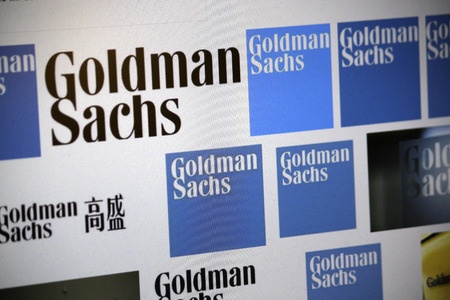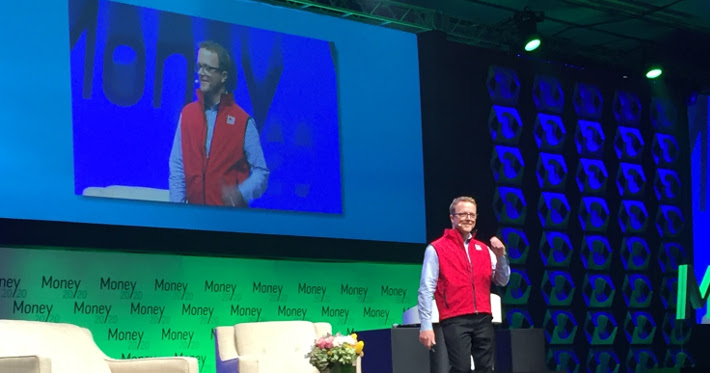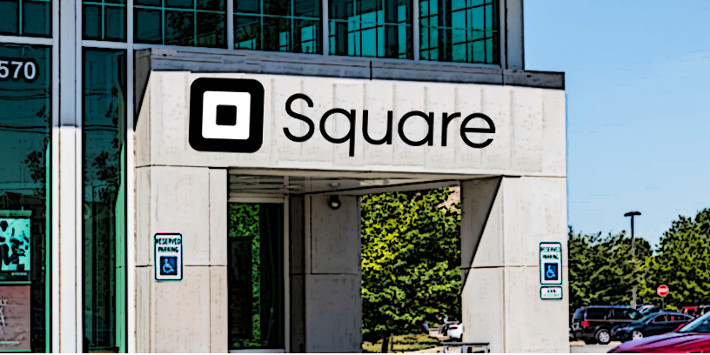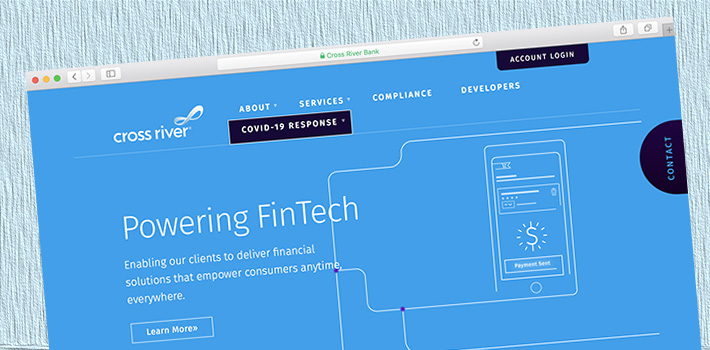Banking
Marcus Has Reached $100 Billion in Deposits
September 24, 2021 Marcus by Goldman Sachs, the prestigious investment firm’s attempt at being a conventional bank, announced that they have over $100 billion in deposits after just five years in operation. The online platform that began as an invite-only savings platform has transformed into a full-blown consumer bank, operating on the futuristic model of operating savings and CD accounts digitally.
Marcus by Goldman Sachs, the prestigious investment firm’s attempt at being a conventional bank, announced that they have over $100 billion in deposits after just five years in operation. The online platform that began as an invite-only savings platform has transformed into a full-blown consumer bank, operating on the futuristic model of operating savings and CD accounts digitally.
“If you told me we would accomplish so much in just five years from launch, I would have said you were crazy,” wrote Harit Talwar in a LinkedIn post on Thursday that announced his retirement from Marcus. “It shows that nothing is impossible when you have the best people.”
In his post, Talwar praised Marcus’ desire to take risks, acting as a separate entity while having to operate within the confines and upkeep of the Goldman Sachs reputation.
 “We had the audacity to think big, and it’s safe to say we proved the skeptics wrong – eight million customers, $100 billion in deposits, nearly $10 billion in card and loan balances, $1.5 billion in run rate revenue, two J.D. Power wins and partnerships with the top brands in the world including Apple, Amazon, Walmart, JetBlue, AARP, General Motors and more,” Talwar wrote.
“We had the audacity to think big, and it’s safe to say we proved the skeptics wrong – eight million customers, $100 billion in deposits, nearly $10 billion in card and loan balances, $1.5 billion in run rate revenue, two J.D. Power wins and partnerships with the top brands in the world including Apple, Amazon, Walmart, JetBlue, AARP, General Motors and more,” Talwar wrote.
Marcus launched in 2016 with some of the best interest rates in the banking industry. It introduced the Goldman Sachs brand to an entire new group of customers by offering up high interest rates on accounts with no fees, which was nearly unheard of at the time. Two years after launch, Marcus had over $35 billion in deposits.
Marcus’ path was almost completely different prior to its launch. The original idea prior to Marcus was a platform called Mosaic, a banking concept meant for borrowers with good credit that were looking to refinance other debt.
In his retirement post, Talwar credited the camaraderie that developed between employees as a major factor resulting in the success of Marcus. “The team has given more than perhaps in prior jobs, but maybe that is the price of building something this extraordinary at an unprecedented pace,” Talwar wrote. “Yet by sharing those experiences in the trenches, we’ve made lasting friendships and redefined what a consumer business looks like.”
The outlook for Marcus is seemingly endless. Online banking is trendier than ever, and the outlook for banking is losing the brick-and-mortar mentality.
Experts also believe that Marcus has helped Goldman Sachs’ progress into new markets. “Marcus has taken advantage of a core strategic advantage—[Goldman Sachs’] lack of a preexisting deposit customer base— to prove that digital deposit gathering at scale is possible for a large institution,” Todd Baker, Managing Principal of Broodmoar Consulting and Senior Fellow at Columbia University told deBanked.
When the company first came about, deBanked reported that Marcus may be poaching customers from a peer-to-peer lender named LendingClub. The two companies are now more alike than ever given that LendingClub is also now a bank. LendingClub, still new to the banking scene however, had only amassed $2.5B in deposits as of June 30, 2021.
It seems that Marcus may have been ahead of the curve when it comes to fintech’s place in traditional banking, racking up staggering figures across the board and showing young upstart competitors just how strong it is.
Cannabis Boom Exposes Difficulties in Lending
September 15, 2021 The legalization of cannabis across the U.S. has exposed an interesting opportunity for banks and small business lenders. With tons of capital, insane amounts of cash flow, and an industry outlook that couldn’t be better, banks and lenders should be swarming in droves to get their hands on a piece of the legal marijuana action. Seemingly a match made in heaven, lenders and cannabis cultivators are running into some serious trouble when it comes to how the cash crop operators manage their businesses’ finances.
The legalization of cannabis across the U.S. has exposed an interesting opportunity for banks and small business lenders. With tons of capital, insane amounts of cash flow, and an industry outlook that couldn’t be better, banks and lenders should be swarming in droves to get their hands on a piece of the legal marijuana action. Seemingly a match made in heaven, lenders and cannabis cultivators are running into some serious trouble when it comes to how the cash crop operators manage their businesses’ finances.
“We had too much cash to keep in one place,” said Charles Ball, the owner of Ball Family Farms, a wholesale grow operation based in Los Angeles. By stashing cash in different safe-houses around LA, Ball had to operate his completely legitimate and legal business like an illegal operation. “Traditional banking wasn’t an option for us,” Ball said.
“We used to drive the cash around,” said Ball. For recent renovations of lighting fixtures, Ball had to pay $125,000 in cash to the company who did the service for him. Ball also paid taxes in cash, a process in which he had to walk into a Los Angeles government building with $40,000 cash on his person. At the time, there was no bank that was willing to hold the cash for him — even for tax purposes.
Prior to going fully cash, Ball did do business with some big banks, but he realized quickly that they weren’t interested in servicing his cash upon learning what his business was doing.
 “They closed my account for wearing a shirt with my business name on it, they put two and two together,” said Ball, when referencing the closing of two accounts with Bank of America and Chase after representatives of the banks saw him wearing his company shirt to make deposits. One of the biggest difficulties of running a cannabis distributor isn’t the growing or the distribution of the product, it’s what to do with the money, according to Ball.
“They closed my account for wearing a shirt with my business name on it, they put two and two together,” said Ball, when referencing the closing of two accounts with Bank of America and Chase after representatives of the banks saw him wearing his company shirt to make deposits. One of the biggest difficulties of running a cannabis distributor isn’t the growing or the distribution of the product, it’s what to do with the money, according to Ball.
“We had no way of banking,” he said, up until February of this year, when he was able to secure his first type of deposit account with a local bank in the Los Angeles area that was fully aware of what his business was doing. “I have to pay more fees, and I don’t get the same type of customer service, everything is different,” Ball said.
With service fees on his deposit account between $2,000-$3,000 per month, the security of doing business with a bank must be worth the price. When pursuing a loan with that bank to expand his operation however, the lending process was halted at the last second after federal regulators told the bank they wouldn’t allow the deal to go through.
“We were denied on the approval date [of the loan],” said Ball. According to him, the bank told him the FDIC stepped in and killed the deal. Once again, Ball Family Farms was forced to explore other options outside of banking, such as exploring renovation options through landlords or simply waiting until the cash is on hand to make the move. “The banking system in this industry is very flawed,” said Ball.
“We’ve never taken private investor money,” Ball said when asked about whether he had explored any other avenues of receiving a loan. “We took [the start] slowly and it works, we are a ground up operation.”
This problem is not unique to Ball Family Farms. Legal cannabis cash flow has been a major issue since legalization first took place in the states. It seems like local governments want the tax revenue, but the bank’s regulators want to make it difficult for lenders to get their hit off the cash pipe until the federal government changes the law on their end.
The opportunity for funding in the industry isn’t going unnoticed however, as cannabis-exclusive funders and brokers are beginning to pop up across the U.S.
Judy Rinkus, for example, CEO of Seed to Sale Funding, is a Michigan based broker who works exclusively with cannabis businesses.
 “[The industry’s] biggest problem is simply finding a lender who isn’t prohibited from lending to cannabis-related concerns,” said Rinkus. According to her, one of the biggest issues is the infancy of the industry, as many cannabis wholesalers and retailers just haven’t been around long enough to be reliable borrowers.
“[The industry’s] biggest problem is simply finding a lender who isn’t prohibited from lending to cannabis-related concerns,” said Rinkus. According to her, one of the biggest issues is the infancy of the industry, as many cannabis wholesalers and retailers just haven’t been around long enough to be reliable borrowers.
“Most businesses have been established for 3 years or less, they haven’t kept good financial records, and accept a lot of cash payments, and they lack sufficient collateral,” Rinkus said.
Rinkus stressed the importance that real estate plays in giving cannabis businesses borrowing power. “Having real estate to pledge as collateral is key,” she said. “There are ways to get other types of loans, but they are often enormously expensive and are limited to no more than 10% of an entity’s historic revenues.”
Rinkus’ outlook on the industry remains positive, and she remains a supporter despite the difficulties associated with cannabis lending. “Businesses in this space are the true American entrepreneurs,” said Rinkus. “In many areas of the country, they are creating jobs and wealth for folks that would otherwise not have the same chances.”
The outlook on the industry is bright. More states are pushing for legalization, social taboo of marijuana is relatively nil, and the potential of an untapped industry in the eyes of both government and banking are becoming too good to pass up. As the industry begins to cultivate its presence, look for the money surrounding cannabis to creep its way into fintech sooner than later.
IRS Snooping Flexes Government Power, but May Drive Crypto
September 14, 2021 To fight tax evasion, the federal government wants the IRS to track any account in the United States that transacts more than $600 in or out over the course of a year. The tracking will apply to banks and other financial institutions. The feds claim that they will use any found tax dollars to help finance the administration’s new $3.5 trillion spending plan.
To fight tax evasion, the federal government wants the IRS to track any account in the United States that transacts more than $600 in or out over the course of a year. The tracking will apply to banks and other financial institutions. The feds claim that they will use any found tax dollars to help finance the administration’s new $3.5 trillion spending plan.
Such a move could push a suspicious populace into crypto, where records, however openly recorded on blockchains, could potentially obscure the parties involved.
Banks have fought against the government’s push to share account transactions, as they argue it will be a major invasion of privacy. This will undoubtedly create an entire new workload for them as well, as the banks will have to provide intricate details on most of the accounts on their books — an unprecedented task.
“I don’t believe that much is going to change,” said Yoel Wagschal, a CPA. Wagschal stresses to his clients to always live their life as if the government has access to the information about their spending habits for the sake of their wellbeing.
“The issue at hand is how far this is going to [go], how far the government’s reach will be,” said Wagschal. “When a government body gets power, they don’t give it back. Look at the power wagon they are on.”
As crypto becomes more of an avenue to store and invest money, it may also be a new channel for coin holders to keep their finances shrouded behind additional layers from the federal government.
LendingClub is Back in the Commercial Loan Business
August 2, 2021 In 2019, LendingClub threw in the towel on its business loan product after mediocre demand and results.
In 2019, LendingClub threw in the towel on its business loan product after mediocre demand and results.
But now LendingClub is somewhat back in the game, due to its acquisition of Radius Bank. The company reported $624 million worth of commercial loans on its Q2 balance sheet, which consists of equipment financing, commercial real estate, and other commercial financing. The average yield on these loans is only 5.81%.
This portion of their business has received little attention, but LendingClub’s website now touts a variety of business loan options available including commercial real estate, SBA loans, equipment financing, and yacht loans.
On leases, it says its target transaction size is between $1 million and $10 million.
During a previous earnings call in Q1, Lending Club execs said they expected all of their portfolios to grow in 2021, but that their focus would remain on the consumer segment. The company originated $2.7B in consumer loans in Q2.
Square Capital is Now Just a Bank Loan Product
July 20, 2021 Square Capital has been reduced to just one of several banking products under the Square Financial Services umbrella. That’s one result of Square successfully becoming a bank earlier this year.
Square Capital has been reduced to just one of several banking products under the Square Financial Services umbrella. That’s one result of Square successfully becoming a bank earlier this year.
Loans will be one product offered alongside checking accounts, savings accounts, and debit cards.
Just as before, Square’s loans will be repaid by diverting a percentage of a business’s card sales. The methodology is derived from its merchant cash advance roots, but what’s different is that a Square loan has a fixed repayment term.
“Pay it back automatically,” Square says of its loan product. “You won’t have to schedule any payments. We just ask that you meet your minimum every 60 days.”
Square has originated more than $9 billion in small business loans since inception and is one of the largest small business lenders in the country.
Cross River Bank Makes Moves as Fintech Acquirer, VC
July 13, 2021 Known in the space as the fintech partner bank, Cross River took another step down the path leading the industry: Last month, the bank bought PeerIQ, a company that does data analytics for loan underwriting. The bank also launched a venture capital arm to continue investing in startup fintechs in a more formalized way- though they have been partners for years.
Known in the space as the fintech partner bank, Cross River took another step down the path leading the industry: Last month, the bank bought PeerIQ, a company that does data analytics for loan underwriting. The bank also launched a venture capital arm to continue investing in startup fintechs in a more formalized way- though they have been partners for years.
“PeerIQ is a company we’ve known for a number of years; we’ve been working with them, partnering with them and in various ways for two or three years,” Phil Goldfeder, Senior Vice President of Public Affairs at Cross River, said. “We recognized that we would probably better serve our customers and partners if we came together, so we’re happy that we’re able to acquire Ram [Ahluwalia, CEO of PeerIQ] and his team at PeerIQ and we’re excited about the collaboration moving forward.”
PeerIQ will function as a part of Cross River, bringing intelligent analytics to every transaction. Cross River, located 14 floors up just across the George Washington Bridge in New Jersey, has about $13.5 billion of assets and has originated more than $46 billion in loans since 2008, Bloomberg estimates. The way forward, as Goldfeder said, was through innovation, leveraging tech and teams like PeerIQ’s to better serve clients. That also means using the formal VC branch to help new firms grow their platforms and future acquisitions.
“Number one is to grow on PeerIQ’s core business, providing data analytics, and creating technology in the secondary market, but more importantly, for Cross River to help our partners and our clients serve,” Goldfeder said. “There’s, no question that we will continue to explore companies that would help strengthen Cross River and the fintech ecosystem and provide additional services to our partners.”
 The bank has over 15 partnerships with top fintechs, like publicly traded Affirm, Rocket Loans, Coinbase, and private firms funded through VC rounds like Stripe. The bank most recently became a significant part of the PPP government emergency loan program. Ranking among giants like JP Morgan and Bank of America, Cross River ranked 6th overall for dollar amount approved. According to the bank, they doled out 490,000 PPP loans for a total of $13 billion, making up 4% of the entire program volume.
The bank has over 15 partnerships with top fintechs, like publicly traded Affirm, Rocket Loans, Coinbase, and private firms funded through VC rounds like Stripe. The bank most recently became a significant part of the PPP government emergency loan program. Ranking among giants like JP Morgan and Bank of America, Cross River ranked 6th overall for dollar amount approved. According to the bank, they doled out 490,000 PPP loans for a total of $13 billion, making up 4% of the entire program volume.
The way forward is clearly through embracing what it always has been at its base: the bank across the Hudson that is willing to partner with upstart brands and help them take over the world. With a flurry of consolidation purchases in the “post-pandemic” world (if that isn’t too early to say) that are only going to increase, Cross River seems to be on to something. Goldfeder said that Covid showed the rest of the world what the fintech space has known for ten years, that added value for customers and partners means innovation.
“Post-pandemic, where I think there was a larger recognition from the financial services industry of the need to innovate,” Goldfeder said. “Cross River is always known that we need to innovate… The post-pandemic dynamic we recognize that there’s tremendous value in creating a more formal venture arm to examine, explore companies that we can invest in to help them grow, help them succeed, and …. increase our support of our partners.”
Bloomberg reported Cross River is in secret talks to raise $200 million of funding at a valuation of $2.5 billion or more. The bank previously raised $100 million in 2018 in a round led by KKR, deBanked reported, and in 2016 raised $28 million.
Congress Tells OCC “Nope” On True Lender Rule
June 29, 2021 In October, the OCC brought clarity to the relationships that many fintech companies enjoy with banks.
In October, the OCC brought clarity to the relationships that many fintech companies enjoy with banks.
So long as a national bank is named as the lender on the loan agreement on the date of origination or so long as it funds the loan, then the bank is considered the true lender, the OCC decided. It issued it as a rule that was published in the Federal Register last year.
The brief proclamation was viewed as necessary in light of lawsuits filed against fintech companies that have challenged who the true lender was on a loan.
National banks are generally exempt from state interest rate caps and licensing requirements. Fintech lenders, therefore, partner up with banks in such a way that the banks themselves actually make the loans so that those same exemptions carry over. The long-used practice has drawn litigation as well as outrage from certain corners of the economic and political spectrum. The OCC rule issued during the Trump era, for example, was not unanimously applauded.
Last week, Congress took the unusual step of nullifying the OCC’s rule.
Resolved by the Senate and House of Representatives of the United States of America in Congress assembled, That Congress disapproves the rule submitted by the Office of the Comptroller of Currency relating to “National Banks and Federal Savings Associations as Lenders” (85 Fed. Reg. 68742 (October 30, 2020)), and such rule shall have no force or effect.
Short and succinct.
The invalidation of the OCC rule does not mean that banks cannot collaborate with fintechs or third parties in such a way as before, but rather that the certainty of what’s acceptable and what isn’t will be relegated to further debate for years to come.
Zoom CEO and Big Banks Rolling Back Remote Work
May 5, 2021 It’s not just you: Zoom CEO Eric Yuan admitted to suffering from video meeting fatigue at the Wall Street Journal’s CEO Council Summit. During a video conference panel called “The Future of Work,” Yuan said he is done with it after sitting through 19 video calls in one day last month.
It’s not just you: Zoom CEO Eric Yuan admitted to suffering from video meeting fatigue at the Wall Street Journal’s CEO Council Summit. During a video conference panel called “The Future of Work,” Yuan said he is done with it after sitting through 19 video calls in one day last month.
“I’m so tired of that,” Mr. Yuan said, “I do have meeting fatigue.”
Yuan said he would begin requiring employees to return to the office at least two days a week. Many WSJ guests at the May 4th conference shared the same sentiment, like JPMorgan CEO Jamie Dimon, who said the firm would begin to bring people back by July.
For creating new ideas, and “for those who want to hustle,” Mr. Dimon said, remote work doesn’t match in person. “I’m about to cancel all my Zoom meetings,” Dimon said. “I’m done with it.”
Along with the announcement from Gov. Cuomo that New Jersey, New York, and Connecticut would begin relaxing all restrictions on May 19th, FIDI hot dog vendors must be excited this week. Goldman Sachs also announced this week through a memo to employees that they should “make plans to be in a position to return to the office” in June.





























